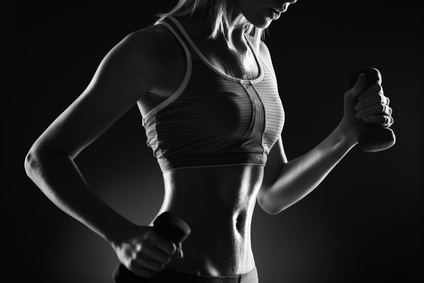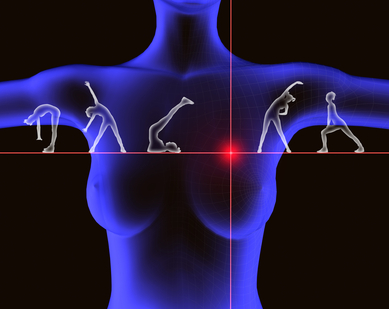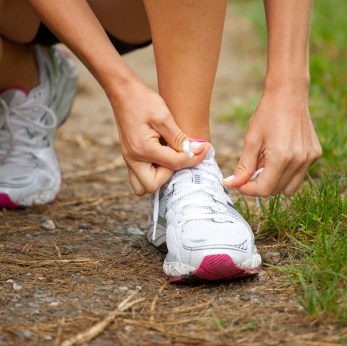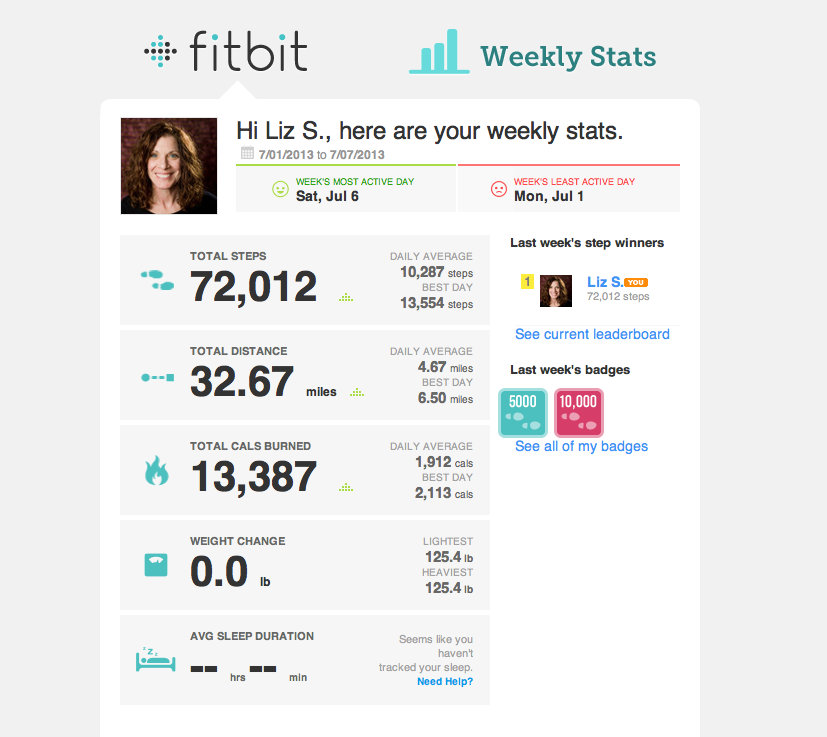Guyside: Breaking good
 I’m a pretty lucky person. While my life isn’t perfect, I have many advantages, and I’m thankful for them. It’s easy to forget about that when you get focused on some problem or other.
I’m a pretty lucky person. While my life isn’t perfect, I have many advantages, and I’m thankful for them. It’s easy to forget about that when you get focused on some problem or other.
But sometimes good enough shouldn’t be, you know?
Think about Walter White, a/k/a “Heisenberg” of Breaking Bad. He was a guy who had a “good enough” life — wife, son, baby on the way, a steady job that is respected, if not well-paying… and then a diagnosis of terminal lung cancer shattered everything in his life and forced him down a radically different path.
I’d be perfectly happy if not one person ever got diagnosed with lung cancer. And, for that matter, if people stopped making and using crystal meth. But I think that we don’t have to “break bad” — why not “break good?”
I’ve been trying to change some of my routines recently. For example, since I work from home I do most of the dinner preparation for the household. It’s the sort of thing that can make a break from staring at the computer or talking on the phone. And, like most people, I have a repertoire of dishes that I know well enough to essentially make without a great deal of thought.
So to break that up, I’ve started to search out new recipes, new ideas. It’s fun to try (especially when they work out well), and it breaks me out of the cooking rut and both me and my partner out of the taste-rut. Example: it being summer, coleslaw is a natural side dish for things we cook on the BBQ. I was used to buying bagged coleslaw from the store, then dressing it with a commercial dressing. Somehow I realized that hey, coleslaw’s just a few shredded veggies. So I started making my own. Then I tried some dressing recipes. WAY better than before. (FYI: I’ve become quite fond of this dressing recipe, with a few variations. Try it.)
I’ve changed other things recently too. I love beer. But having that end-of-day beer or the beer with supper, or the finished-the-yard-work beer can become a little … routine. So for a few weeks now, I’ve haven’t been bringing beer into the house. Now, when I have beer — like I did yesterday during an end-of-day business meeting, or like I did when I was visiting family recently — it’s DELICIOUS. At some point, I’ll likely restock the fridge, whenever I get the desire to do so.
There are all sorts of little routines that we establish in our lives. Many of them are there for very good reasons. We get up and shave and shower because we like being clean. We brush our teeth because we want our breath fresh and we don’t like cavities. But changing habits can be good for you. It stimulates your brain. It can make you think about the reason behind the habit. And that’s never bad.
Look at the routines of your day — the way you interact with people in your life, what you eat, drink, how and when you exercise, your activities, your leisure, your work. Pick one to play with, to try to change.
A lot of meditation practices focus on mindfulness — on simply being aware of your circumstances. If you feel good, note it. If your knee is sore, note that. If you want another cup of coffee, be aware of the desire. Assessing the little routines, experimenting by breaking one of them for good, and seeing if it improves your daily life — that’s part of mindfulness too. And failing is part of changing habits too. If you don’t like a change, or you can’t stop biting your nails, or whatever — just note that. Don’t beat yourself up over it.
Try it, just for fun.
Read MoreCan you exercise those hot flashes away?
It’s no secret that exercise is an integral part of my daily life and to maintaining some semblance of balance. I have long said that without some form of activity, you’d probably find me crumbled in a corner in a sea of unease. To put it quite simply, I don’t feel well when I don’t exercise. However, as much as I would like to believe that my daily workouts are somehow keeping those flashes at bay, the evidence is not there. In fact, the most recent information out of the MsFLASH (Menopause Strategies: Finding Lasting Answers for Symptoms and Health) Research Network may put the question to rest.
In a quest to tease out the answer, researchers compared the effects of tri-weekly, moderate intensity aerobic exercise to no exercise in 248 women in late perimenopause or postmenopausal sedentary women. And while they hypothesized that regular exercise would significantly reduce the frequency and severity of hot flashes, what they found was the opposite. The reported decline in flashes was equal between the two groups. Moreover, the reduction in how bothersome the flashes were relative to activity was minimal and not significantly different between the two groups.
On the flip side, exercise did seem to benefit sleep quality, reduce insomnia and depressive symptoms but only to a small degree.
So, what to make of these data? First, exercise is important to overall health and wellbeing and has been shown to help maintain an optimal weight, benefit the heart, boost muscle strength, prevent bone loss and assist with balance. There is no doubt whatsoever that exercise is an essential part of living, particularly as we age. The conclusion? It’s not time to throw the baby out with the bathwater. Still, in so far as exercise and vasomotor symptoms, research has repeatedly provided compelling evidence that all bets are off; exercise does not alleviate menopausal vasomotor symptoms, particularly in women who are usually sedentary. Yet, there is a silver lining in this story as experts don’t know if a single bout of exercise can benefit hot flashes in the short term. Moreover, physiological and psychological factors may also skew results; in this study, the effect of exercise on the frequency of vasomotor symptoms varied significantly by race, with white women experiencing declines relative to usual activity and African-American women experiencing no benefit.
The benefits of exercise to health outweigh its null effects in the vasomotor department. And, pushing the heart rate up a bit may help boost those nightly 40 winks. Don’t stop believing or moving. But when it comes to flashes, it’s time to look for help elsewhere.
Read MoreHave a heart? Move your body!
Ladies, listen up! Roughly one third of your life is spent in menopause and thereafter, which is why it’s so important to manage your health appropriately. One of the greatest issues during this time is heart disease, and after menopause, women are exponentially at increased risk for developing cardiovascular conditions compared to their male peers. Although there are numerous reasons for this increased risk, changes in hormones, namely estrogen, can set the wheels in motion, affecting weight, cholesterol levels and in some women, the way that they process sugar in their bloodstream. The bottom line is that as we lose the protective effects of the ovarian hormones, our cardiovascular system is at increased risk. Moreover, one of the most important consequences is the impact on what researchers refer to as ‘autonomic cardiovascular control,’ i.e. heart rate, pressure in the arteries, the ability of the heart to contract properly and the overall ability of the blood vessels to increase the amount of blood that they hold without significantly increasing blood pressure.
Until now, hormone replacement has been the go-to strategy to modify these heart disease risks. Yet, as we all know, the benefits of HRT with regard to heart disease prevention have been challenged and in fact, some studies show an increased rate of stroke and heart events.
The good news is that researchers are now saying that regular physical exercise may be the answer!
It’s a fairly well known fact that physical exercise can improve quality of life and even reduce the risk and/or overall progression of heart disease. One of the ways that it confers its protective effect is the direct impact on autonomic cardiovascular control mentioned earlier in this post. In particular, study findings suggest that regular physical activity may help modulate heart rate and correct the pressure in the arteries (which tends to bounce all over the place as estrogen declines and we age), although for reasons that are unclear, the same benefits are not seen in women who have undergone early menopause.
A common thread found in Flashfree over the years has been to move your body. Aside from weight, wellbeing and perhaps a balancing of vasomotor symptoms, regular exercise may also act as a buffer against physiological changes that occur as estrogen declines and heart disease risk soars.
There’s no time like the present. Get moving!!!!
Read MoreFit to be tied: MsFLASH and exercise
Exercise. Does it or doesn’t it? That is, does exercise improve menopausal symptoms? Some studies have shown that it does; and others, like the one I am about to share, shows that it does not.
I am fit to be tied, literally.
Not angry or annoyed but rather, regardless if exercise can improve vasomotor symptoms or not, there is absolutely no doubt that it helps maintain weight, improves overall wellbeing, promotes healthy bones, and may even result in better sleep in midlife. On Wednesday’s post, I shared information about a series of studies called MsFLASH, studies geared towards identifying strategies to alleviate menopausal symptoms and overall health. Today, I ran across one of these trials, published online in Menopause, the goal of which was to clarify the impact of three times weekly aerobic training in women who were in late perimenopause or full menopause reporting frequent and bothersome hot flashes and night sweats.
Exercise/aerobic training can mean a lot 0f things. This time, women who were randomized to 12 weeks of exercise participated in trainer supervised conditioning comprising a treadmill, elliptical or stationary bike for 40 t0 60 minutes each session, with the goal of reaching up to 60% of target heart rate for the first month and up to 70% thereafter (this, along with workload and perceived exertion was measured throughout each session). Likewise, the women had energy expenditure goals relative to their body weight. The other group of women were asked to maintain their usual activity levels but at the end of the study, were offered a one month gym membership or yoga sessions.
While the verdict wasn’t so great for reduction of the frequency and bother of daily hot flashes (both study groups reported declines in hot flash frequency by roughly 2.5% and bother only changed minimally), adhering to training sessions appeared to favourably move the needle for sleep quality and quantity and yielded small improvements in depressive symptoms. Another interesting finding was that race appeared to play a role. Data have shown that African American women actually experience more severe hot flashes than their white peers. And, in this study, while exercise had some impact, albeit minimal, on hot flashes and night sweats, this impact was only seen among white women.
Still unanswered are whether or not small bouts of exercise can positively impact vasomotor symptoms or if individual differences (such as the one that race provides) also play a role. While these questions are being pondered, I’ll leave you where I started: exercise and menopause? Fit to be tied. Don’t give up the activity; it may not help your flashes but it yield a whole lot of benefits beyond cooling the heat that ails.
Read More
Wednesday Bubble: My Fitbit Flex
I have been meaning to share my experiences with the fitbit flex every since it arrived in my mail two months ago. Fortunately, a FaceBook thread debating the merits of wearable mobile health devices prompted me to finally sit down and gather my thoughts. True confession: this my personal opinion and nothing more.
The fitbit flex. Pretty nifty, right? However, anyone who knows me well will want to know why I purchased one in the first place; after all, I hardly need motivation to go to the gym or get on my bike.
Weight gain. That’s right, weight gain (disregard the number below – it’s not reflective of what I am referring to). And while a few pounds is hardly cause for concern, those of you in the midlife set will understand that some of the changes that take place in our bodies don’t always bode so well. Hence, I decided to take charge, contacted an RD to discuss my eating patterns and decided to monitor my activity a little more closely. The rub? The flex doesn’t really monitor one’s activity very well.
In fact, if you are not upright, it may not monitor your activity at all. That takes a bit more motivation to take the time to input your activity, time spent doing the activity, etc, time that might be better spent actually doing more of that activity.
If you look at my numbers over the past week, they look pretty good:
However, this is what they don’t show:
- Hours spent on the recumbent bike: 5
- Hours rowing: 2
- Hours gardening: 2
- Hours spent doing housework: 3
They also don’t account for the fact that the battery ran out of juice a few times and I had to take the flex off for a recharge.
Moreover, after the first week, I stopped monitoring my sleep. It didn’t appear to be very accurate. And calories consumed or burned? Fuhgeddaboutit! If the band is not accurately reflecting my activity and I am not inputting any information about the food I’m eating, it’s hard to accurately determine how many calories I am burning, right?
Is there anything that I like about the flex?
It’s lightweight and I usually forget that I’m wearing it. That’s a lovely feature. I think it’s cool and although the weekly reports are not quite right, it’s still nice to know that I have daily goal — 10,000 steps — that I am trying to reach if not surpass. However, as a tool to effectively monitor what I am doing and how I’m doing? The flex gets about a 3 out of 10 in my book. I want easy, accurate and intuitive. I want a device that thinks for me and not the other way around. Clearly, when you only spend $99 you are getting a Nissan and not an Infiniti. But, if you are going to drop the dollars in the first place, shouldn’t you know what you are buying?
Admittedly, I ordered the flex before it became available. As an early adopter, I guess that I got what I paid for: no guarantee.
On the flip side. I know that anecdotally, those of my friends who have difficulty motivating themselves to move more have been inspired by the flex and other mobile health devices. Moreover, data from one study demonstrated that users of a smartphone monitoring application were likelier to both log steps regularly and had a greater odds of exceeding the designated 10,000 step goal per entry. Less clear, however, was whether or not these changes in behavior would take hold permanently or were simply an anomaly of the shiny new object syndrome.
Already, I find myself losing interest in the flex and will likely abandon it over time. I find that I am no longer motivated to log in the extras that the flex can’t record. An hour with my personal trainer would have likely been a better use of my money.
What about you? Do you have a flex or some other device? What do you like about it or dislike about it? Are you more or less motivated now that you have a device or will it end up in the land of lost tech toys?
Inquiring minds…
[Disclosure – Fitbit did not approach me with a suggestion to purchase a flex or write a review. The words, thoughts and opinions expressed are solely mine without bias or intevention.]
Read More









